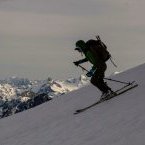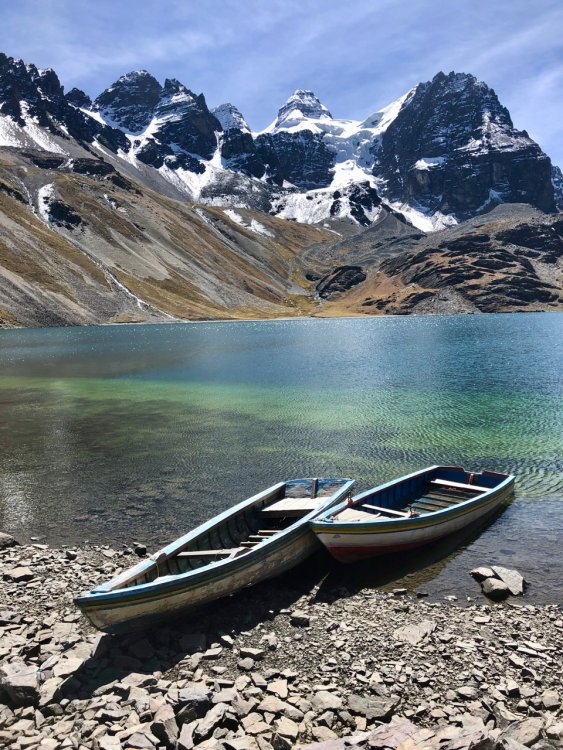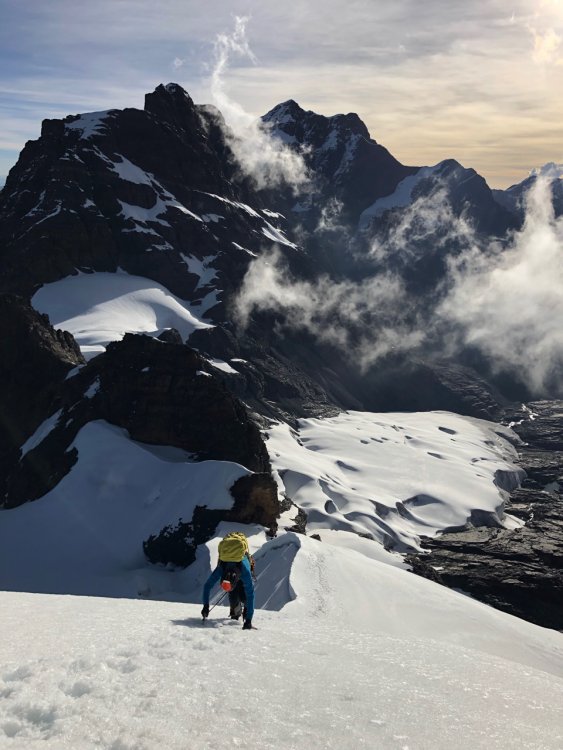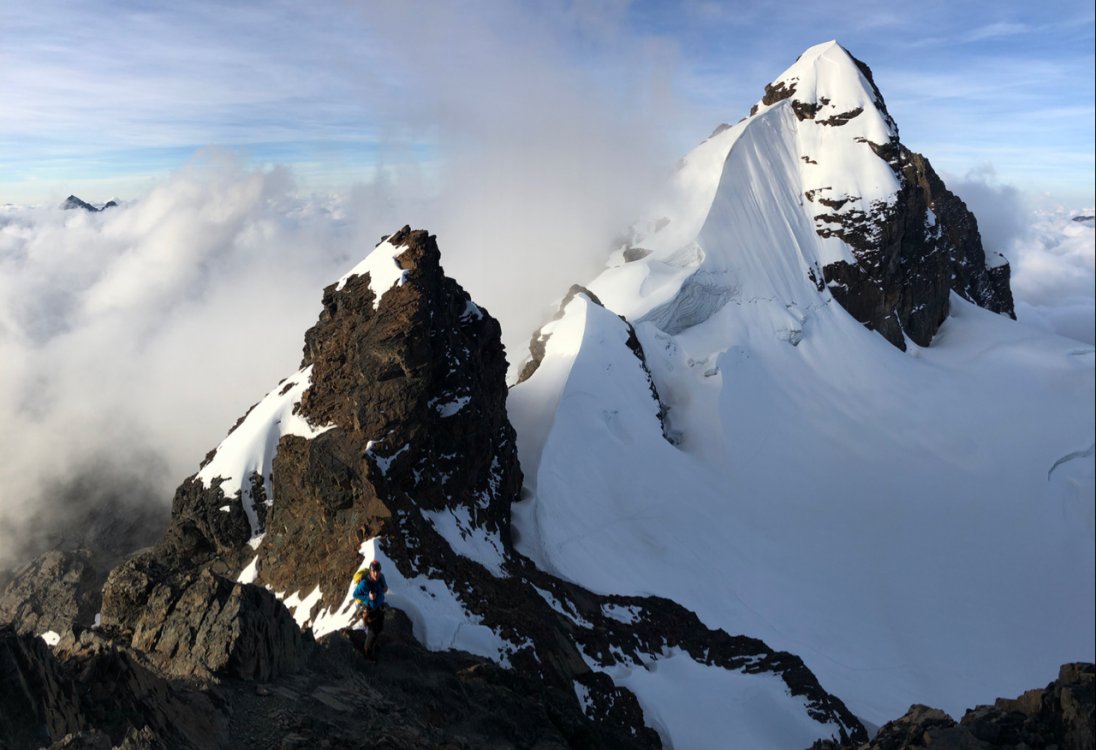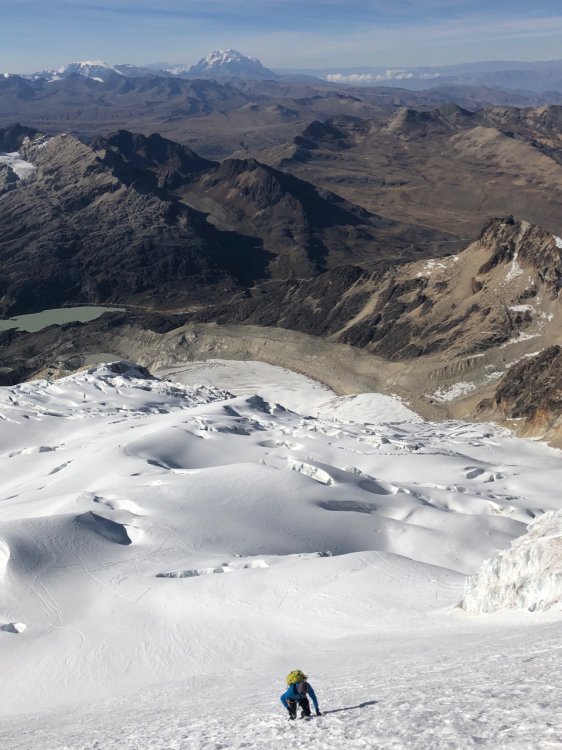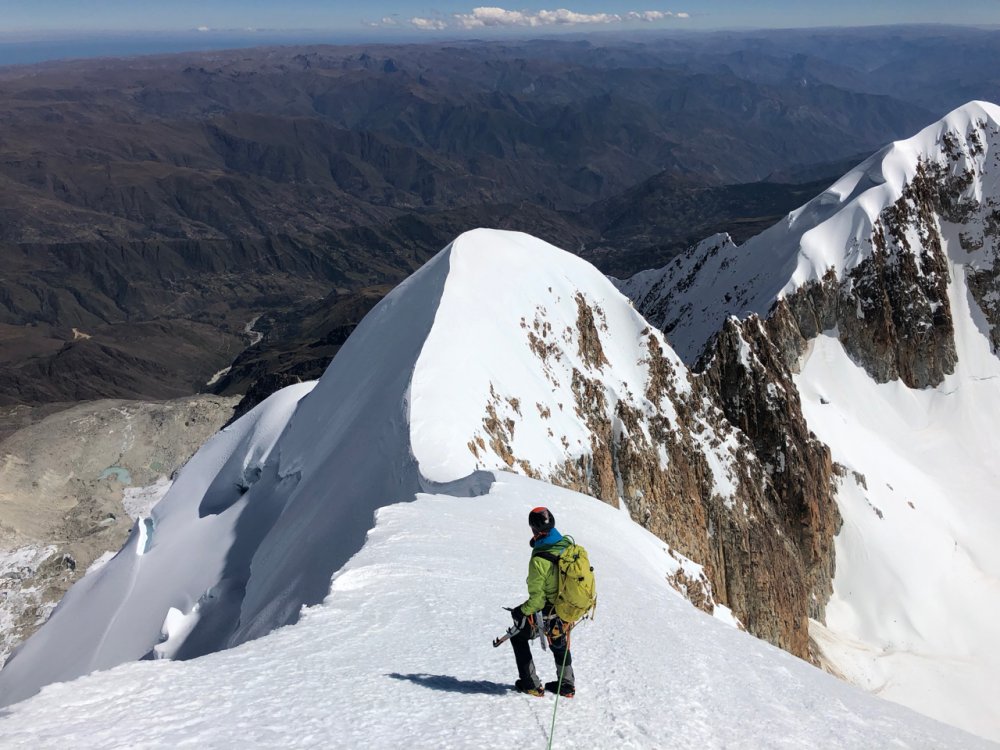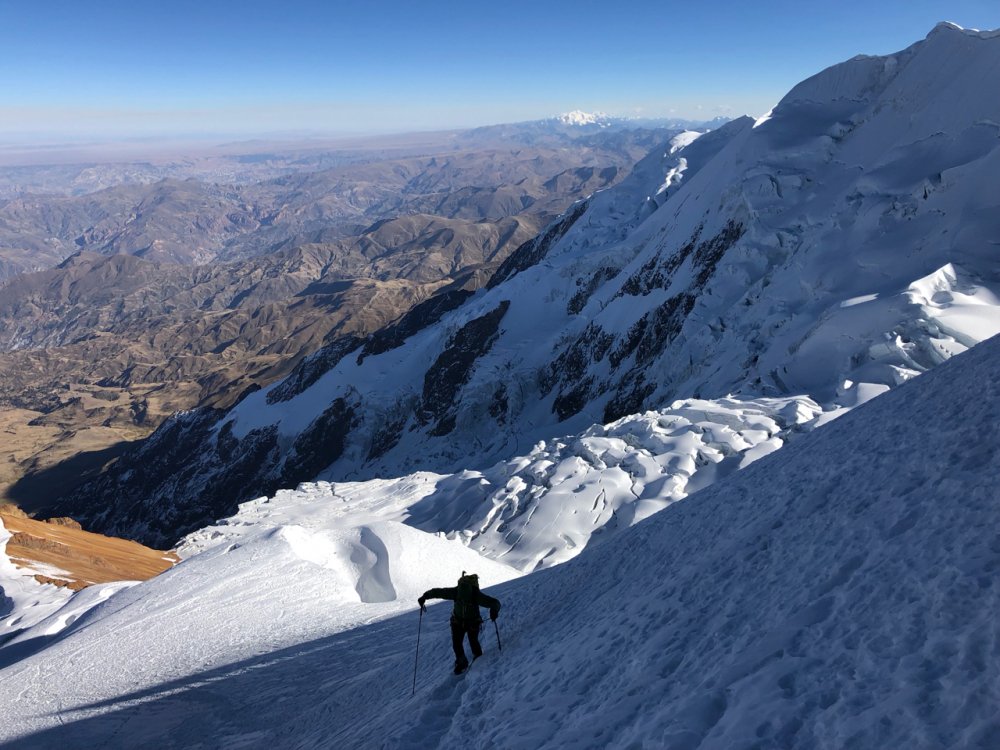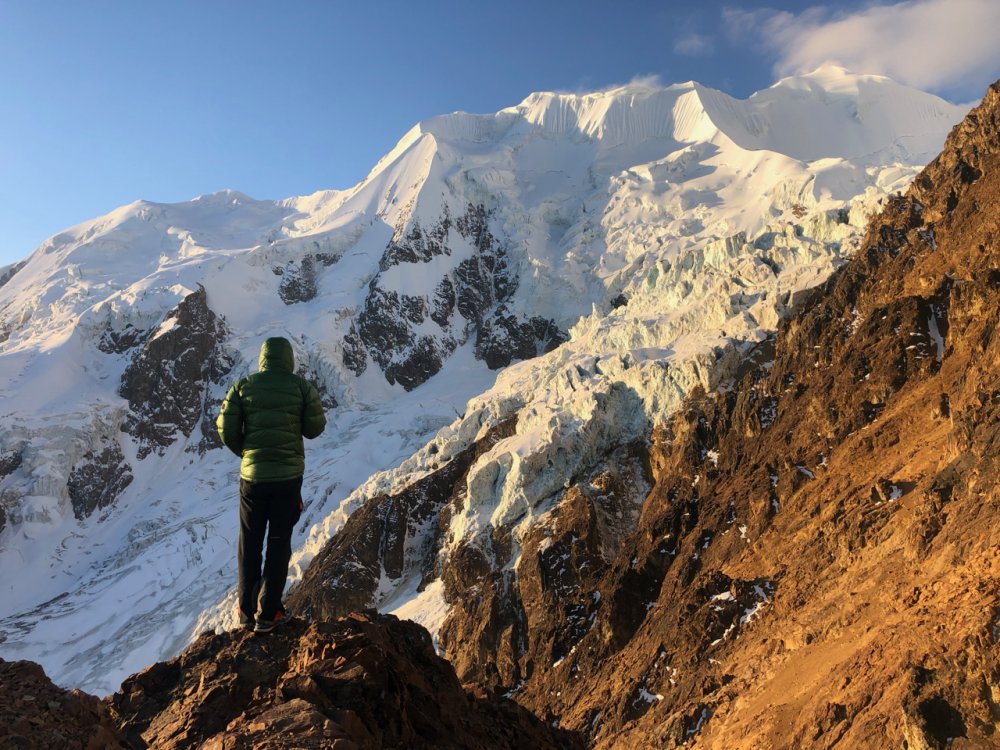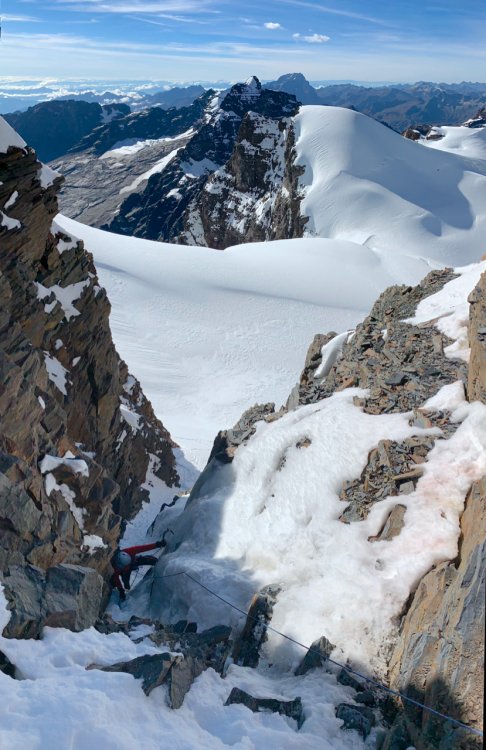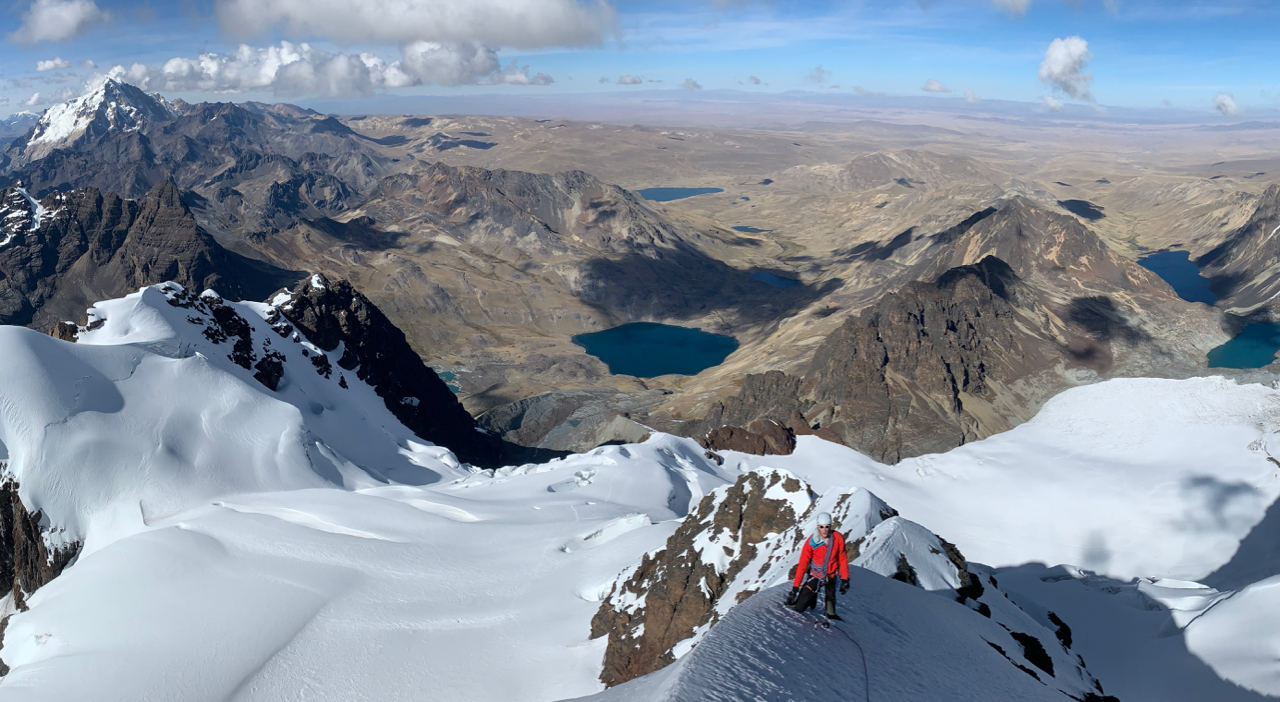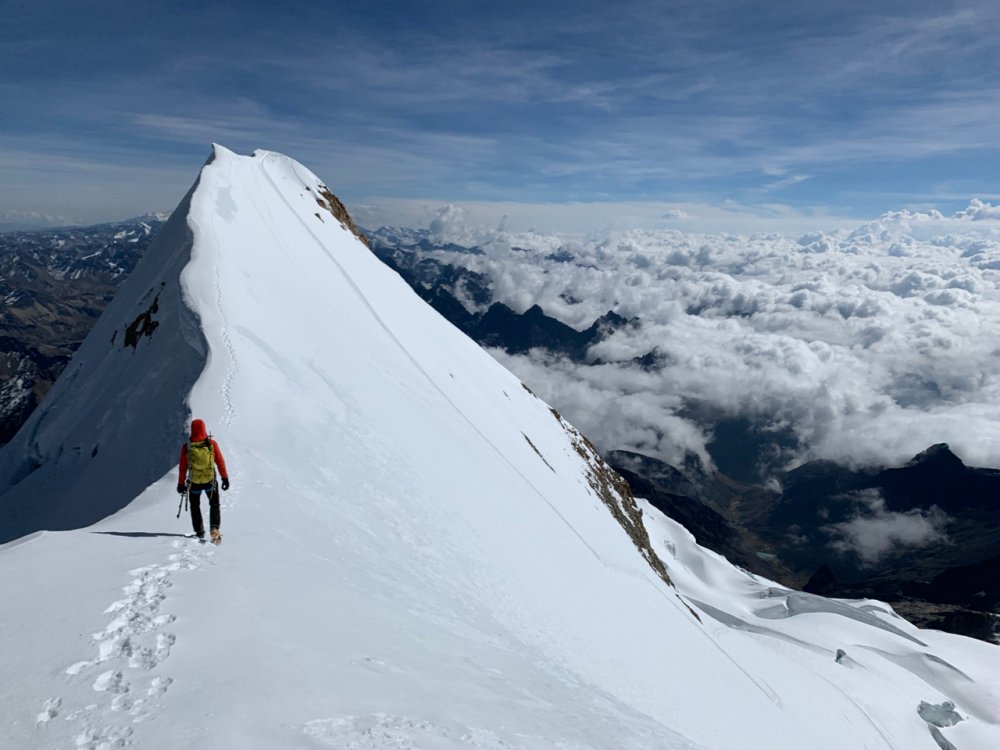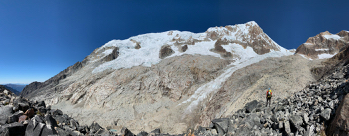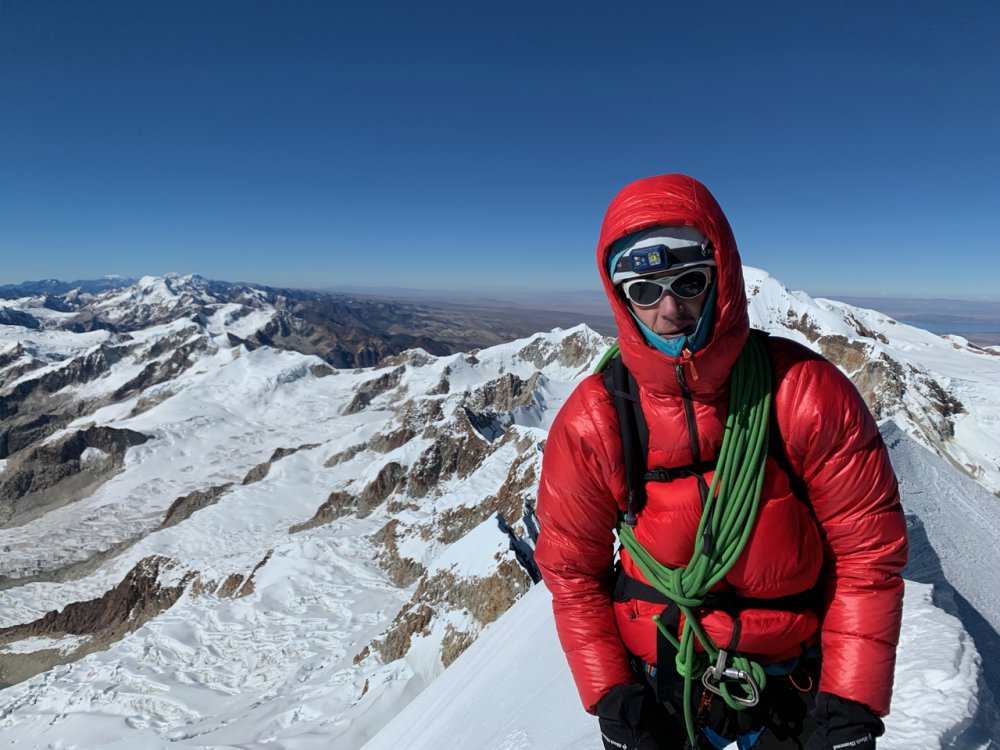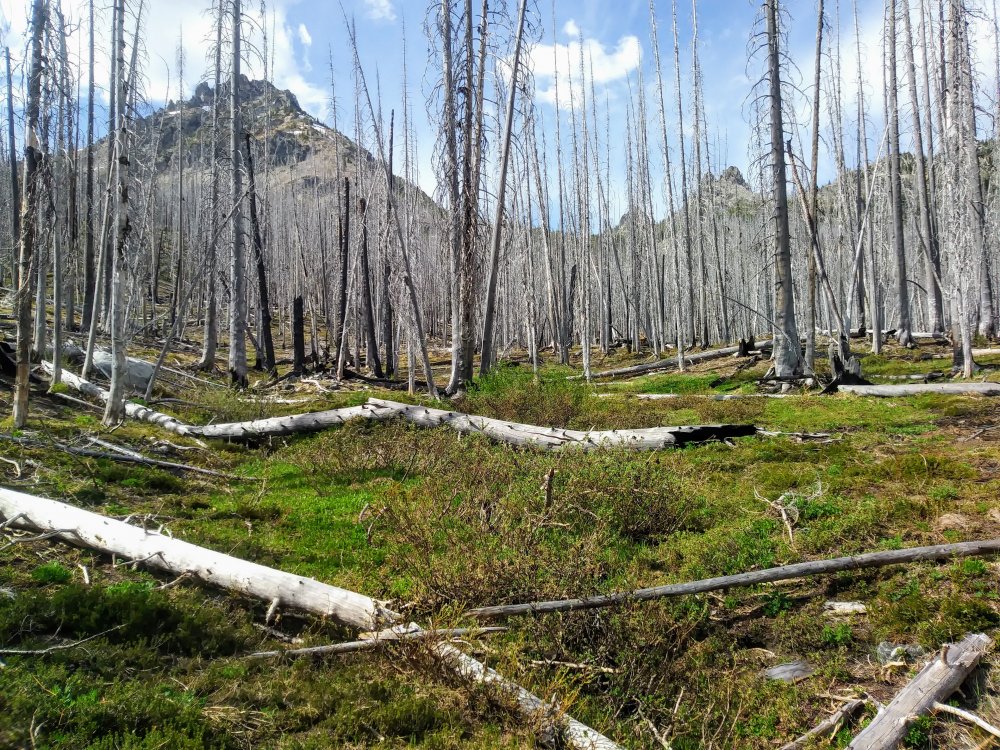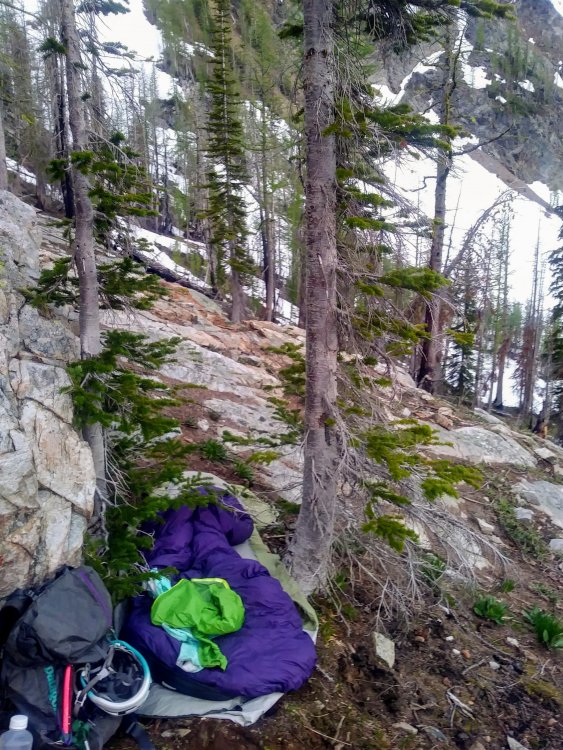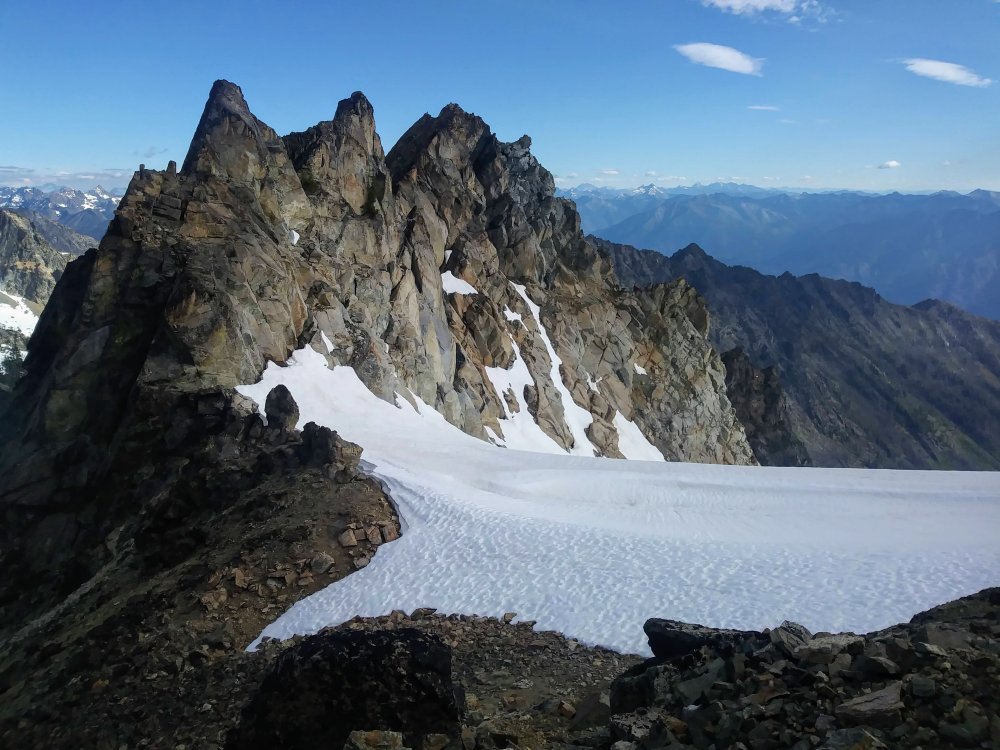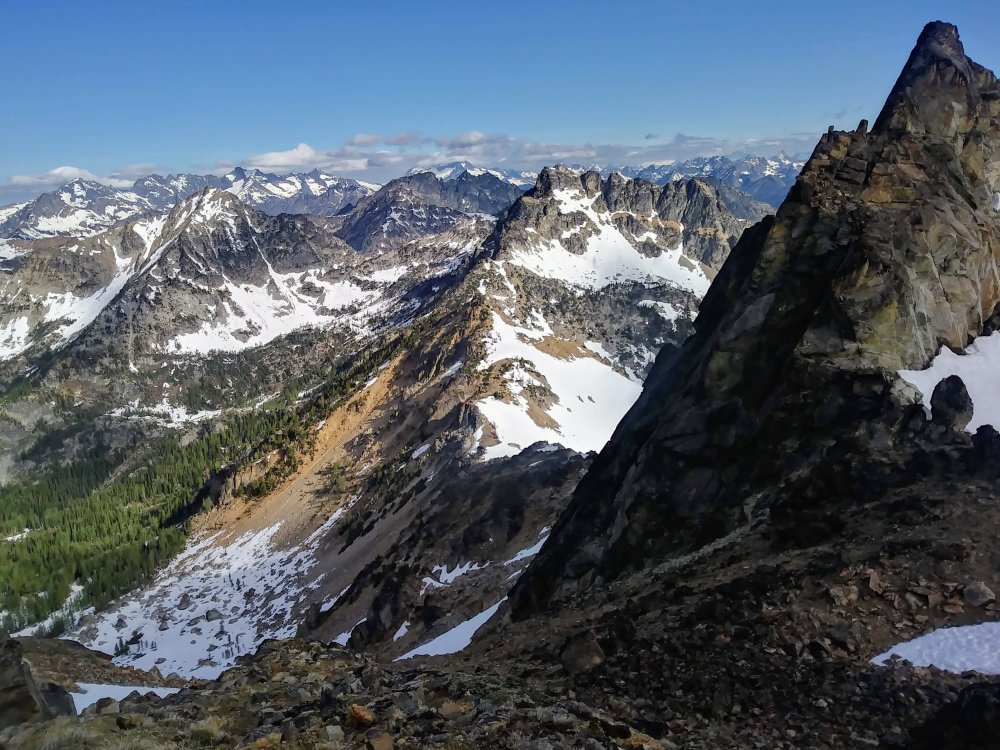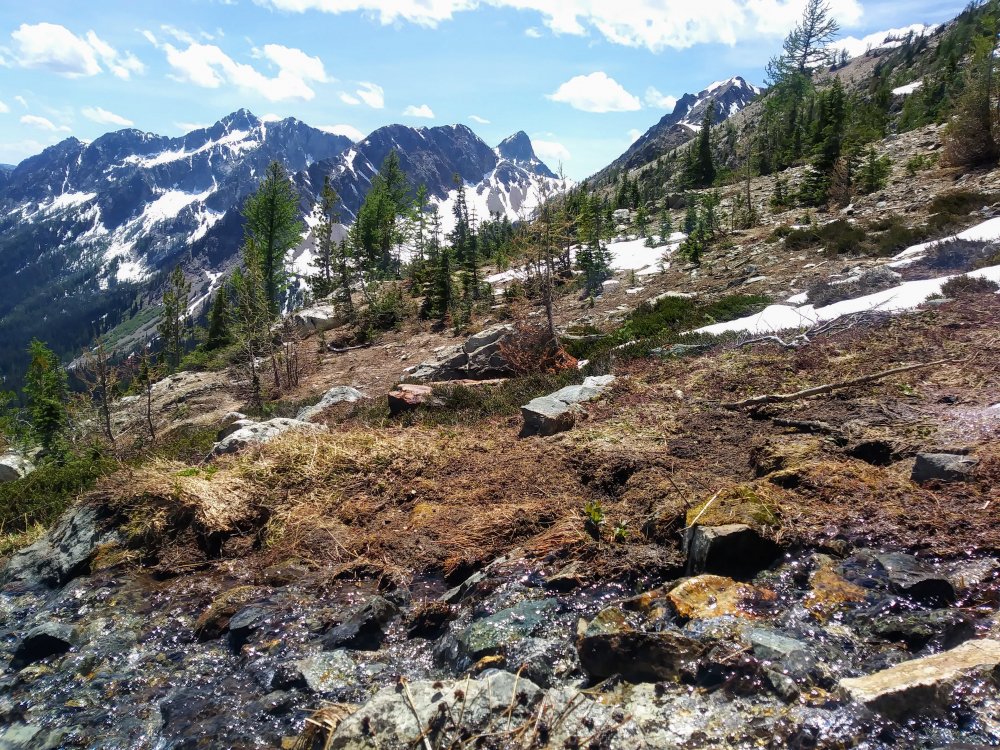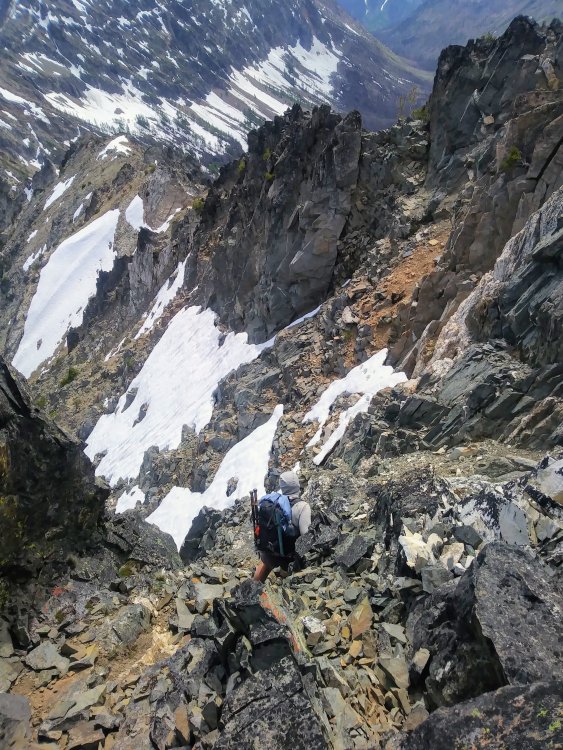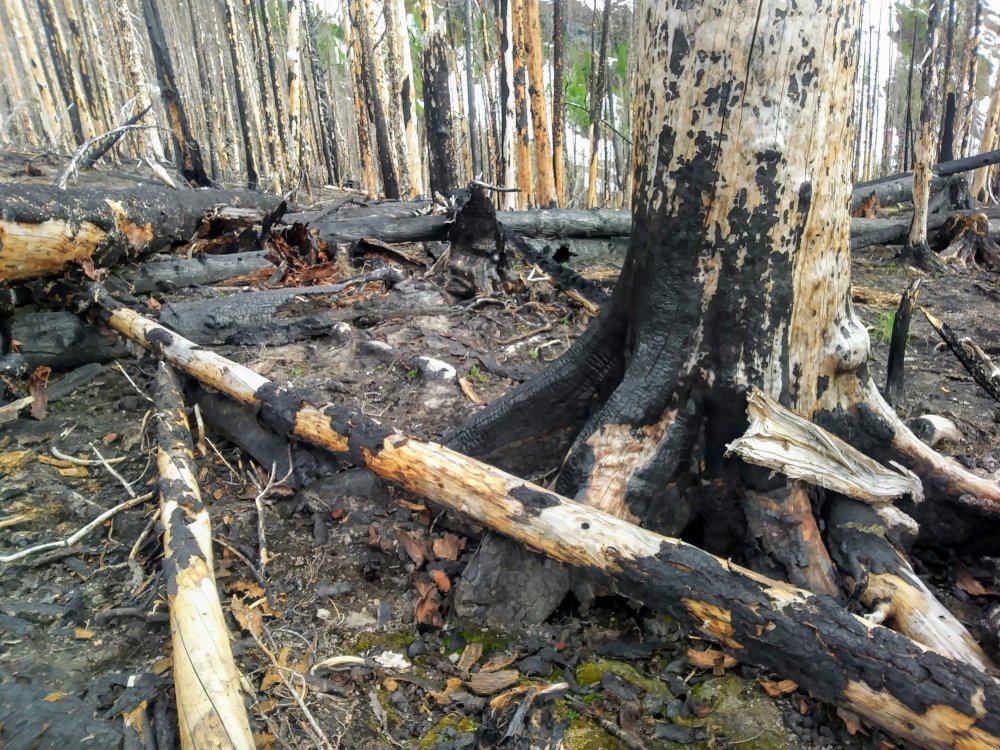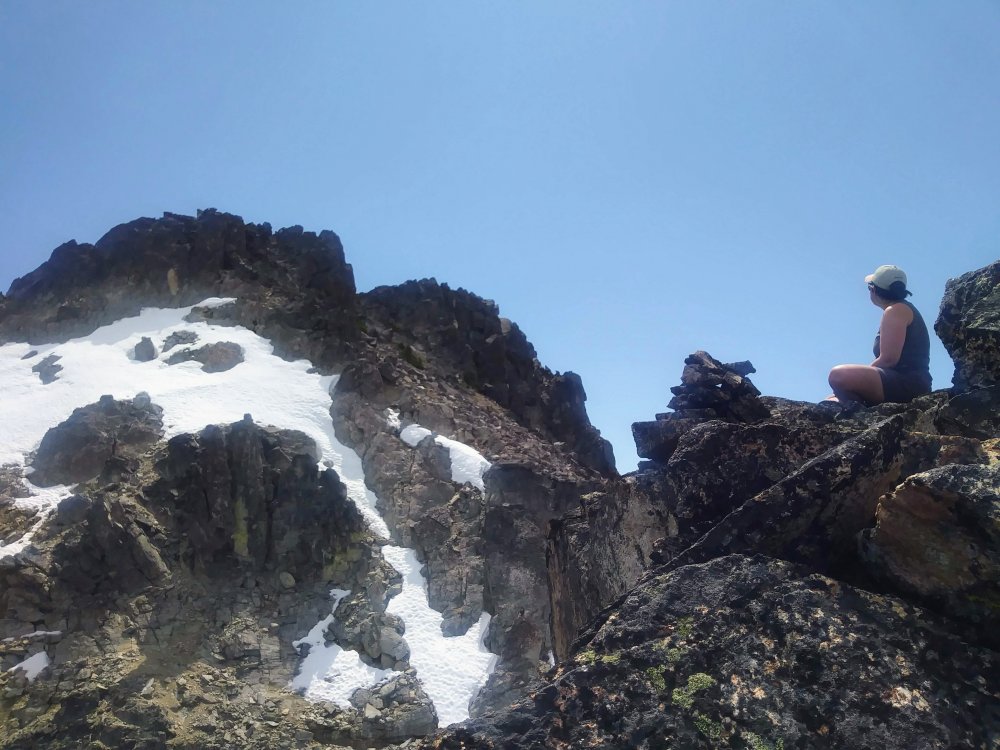Leaderboard
Popular Content
Showing content with the highest reputation on 06/16/19 in all areas
-
Trip: Bolivia - Cordillera Real - Pequeño Alpamayo, Cabeza de Condor, Huayna Potosí, Illampu, and Illimani Trip Date: 05/26/2019 Trip Report: I just returned from a 3-week climbing trip to Bolvia and figured some folks here would be interested in hearing about the climbing down there. We stayed mostly healthy, had perfect weather and conditions, and the logistics went smoothly, which made it possible to pack in a lot of climbs: May 26 - Arrive in La Paz May 28 - Pequeño Alpamayo (17,618') - West-Southwest Ridge (III, AD) May 30 - Cabeza de Condor (18,530') - Southwest Ridge (III, AD+) June 2 - Huayna Potosí (19,974') - French Direct Route (III, AD+) June 6 - Illampu (20,892') - Northwest Headwall to Southwest Ridge (III, AD/AD+) June 12 - Illimani (21,125') - West Spur / Normal Route (II, PD) June 15 - Depart La Paz My partner and I had previously done similar trips together to Patagonia and Peru, so we felt comfortable designing our own itinerary and climbing alone without guides. I'd recommend this for experienced climbers who appreciate a "faster and lighter" mentality (and only if you have at least one person who can speak enough Spanish to get by). We bought Yossi Brain's 1999 Bolivia Climbing Guide and found enough beta online as well. We did a healthy amount of Google Earth scanning to identify camps and approach trails too. In my trip reports linked above, I've included Strava links with our GPS tracks to save others some trouble (just ignore if you want more suspense : ). In terms of logistics, we flew into La Paz, which is crazy city of nearly a million people in a valley with another million or so on the sprawling altiplano called El Alto. The city is an interesting experience in contrasts, with everything from folks living in dirt-floored huts to a shiny cable car system. La Paz is about 12,000' depending on where you stay and El Alto is about 14,000'. We opted to rent an Airbnb in La Paz for the whole trip as a basecamp (at ~$30/night, this was pretty economical). We started in La Paz for 3 days / 2 nights to acclimate before our first objective, which we deliberately chose to be one of the shorter peaks (Pequeño Alpamayo at 17,618'). This worked well for us. We slowly ratcheted up the elevation over the course of the trip and never felt worse than headaches and throwing up breakfast once. You can hop into the links above to hear more about our experiences and the routes. I've put a few pictures in here to whet your appetite! - Jeff Gear Notes: We brought 5 pickets, 8 ice screws, some nuts, and some pins, just in case. We ended up placing pickets only once or twice on the trip and simul-climbed or simul-soloed almost all of the terrain. Approach Notes: See each trip report for some details on how we got there and a GPS track.2 points
-
Trip: Chelan Mountains - Pinnacle, Cardinal, Emerald, Saska - 3rd class routes Trip Date: 06/13/2019 Trip Report: Tessa and I scrambled up the four tallest mountains in the Chelan Range on Wednesday and Thursday. I'm glad she's working on the Bulgers, otherwise these may not have been on my radar. The "Chelan Slam" was super fun: no rope or skis to carry, great weather, easy scrambling, snow still covering lots of the scree, lots of flowing water for drinking and shirt/hat dipping, good snow conditions for travel, amazing views, and a good amount of up and down. My summary: Pinnacle: 1 star Cardinal: 3 stars Emerald: 3 stars Saska: 0 stars We met up in Wenatchee at a park and ride a bit before 11 AM on Wednesday, and Tessa drove us up the Entiat River Road. We set off along the Entiat River and it felt like it was about a million degrees out. The turn off for Emerald Park Trail is marked by a burned up sign post. This area is neither brushy, snowy, nor emerald -- it is charred, ashy, and really frickin' hot in the sunshine. The trail is easy to follow though! We turned off this trail, away from Snowy Brushy Creek (flowing well), up toward Borealis Pass, before getting into the guts of Pinnacle. Looking up toward Borealis Pass A few marmots were spotted. I think Summit Post says it's 13 miles from the TH to Borealis Pass. We ended up going up a narrow talus/scree gully (not the beta, but it went OK other than the loose rocks...) to get up to the broad basin (snow here) on Pinnacle and then wrapped around the choss pile to get on top. Very sedimentary/slate-ish/exfoliating rock. Not much 3rd class at all. Great views of our other three objectives to the southeast. Panorama that Google Photos made me From there, we descended the proper way which was further west than where we came up, went back down over the pass, crossed the creek, then set out on the very charred/ashen landscape up toward Saska Pass. Luckily we found the somewhat difficult-to-follow burned out trail relatively quickly. The plan was to get up to the meadow camp described on Summit Post/Klenke for our bivy/setup for the next day, but daylight was going quickly and there weren't lots of great bivy spots (steepish terrain, dead but standing trees everywhere). We decided around 9:45 to stop at a slabby bench that had some tiny flat spots and was surrounded by some of the only green trees around (lots of larches in there!). I slept between a rock and a conifer, more comfortably than I expected! The moon, mostly full, was bright and the sky was full of stars.... Good enough The next morning we set off a bit before 6 AM up and over the pass (some snow, no crampons needed) to the side of the living, found the trail pretty quickly, and made quick work over to Cardinal. This North Fork basin was beautiful! Getting up to the sweet basin below Cardinal was quite straightforward, and then from the saddle over to Main Peak was easy, pretty solid rock, friction slabs, and a fun steep snow traverse with full-hilt axe plunges and solid feet. Minimal scrambling, great views everywhere! The descent included lots of fun snow running! From a bit above the saddle on Cardinal, can you spot Bonanza? We went back down to the trail, and next was Emerald. Emerald turned out to be a little more complicated (so many gullies, so many depressions between them, which one?!) but because of the minor shenanigans, we got a bonus summit (the north NORTH summit) and a few actual 4th class moves including an unexposed VB boulder problem up and out through a hole, which was fun. All that only cost us about a half hour total, and luckily it was very easy to get down and over to the correct gully and up the correct summit. Great views! Some peak identification: Bonanza, Maude, 7FJ, Goode. More fun snow running and boot skiing on the descent! Damn, that one is definitely taller.. Last was Saska, which sounded like the easiest of the group... but it also ended up being a choss pile of unimaginable proportions. UGH. Highly do not recommend. The best part of this one was that there was still a fair bit of snow on the lower third. This did not make up for the stress induced by the shitty, shitty rock everywhere on this thing. Interesting to notice about 5 different types of rock, 4 of which were really crumbly/peeling/disintegrating/etc. Pretty windy on top and we knew that we had a slow descent in front of us, so we didn't hang out long. I'm waiting for Tessa to get out of firing-line range Looking toward Saska Pass, I believe We headed back over the pass and picked up our sleeping bags/pads, I unloaded my last muffin onto Tessa, and we headed out in much cooler weather (thankfully). We played a few rounds of hanky panky, an interesting name for a pass-the-time word/rhyming game I learned going up to Bungundy Col in 2014. Tessa came up with a great one: her clue was waterfall, and the hanky panky was MOUNTAIN FOUNTAIN. Yesssss! So charred My feet were ready for the Chacos when we got back to the car at 9:45 PM. Great trip, thank you Tessa for this idea, and I highly recommend at least Cardinal at this time of year! Did you know?! You probably already did, but according to Wikipedia, the name Chelan derives from the traditional Wenatchi name Tsi-Laan meaning "deep water". Gear Notes: Brought light axes and crampons -- got out axes a couple times, never used pons. I was glad to have a helmet on Saska. Approach Notes: We took Entiat River -- you could also approach via the North Fork Entiat.1 point



